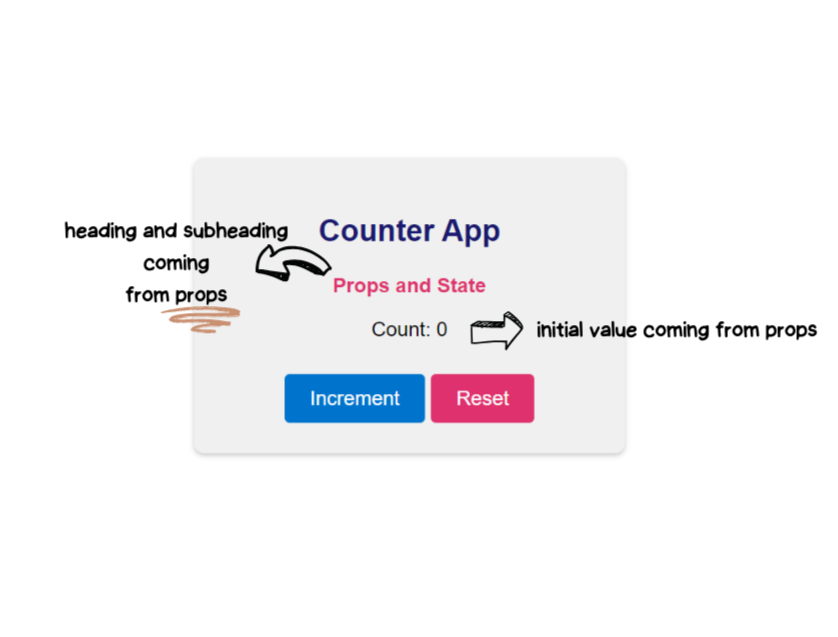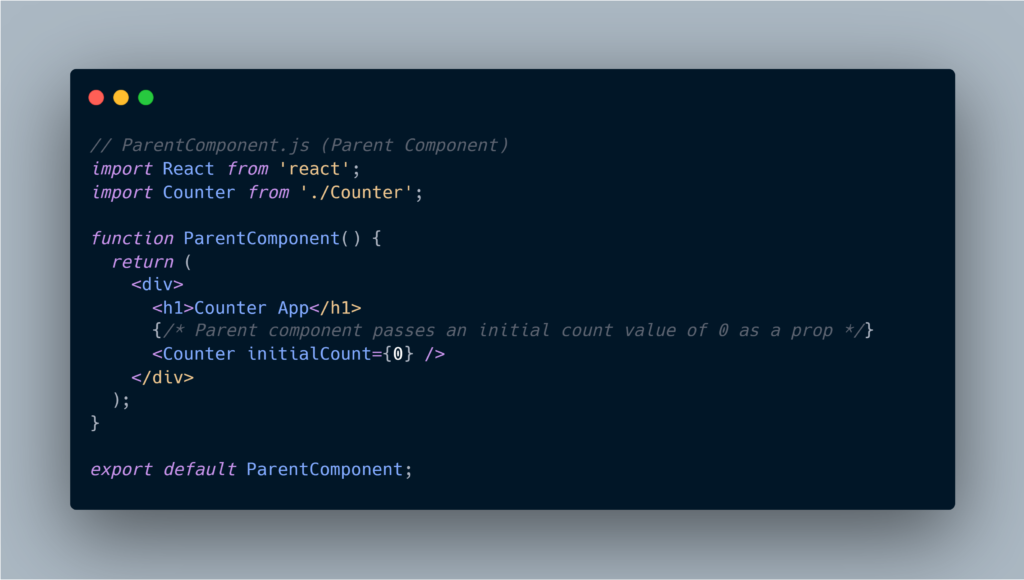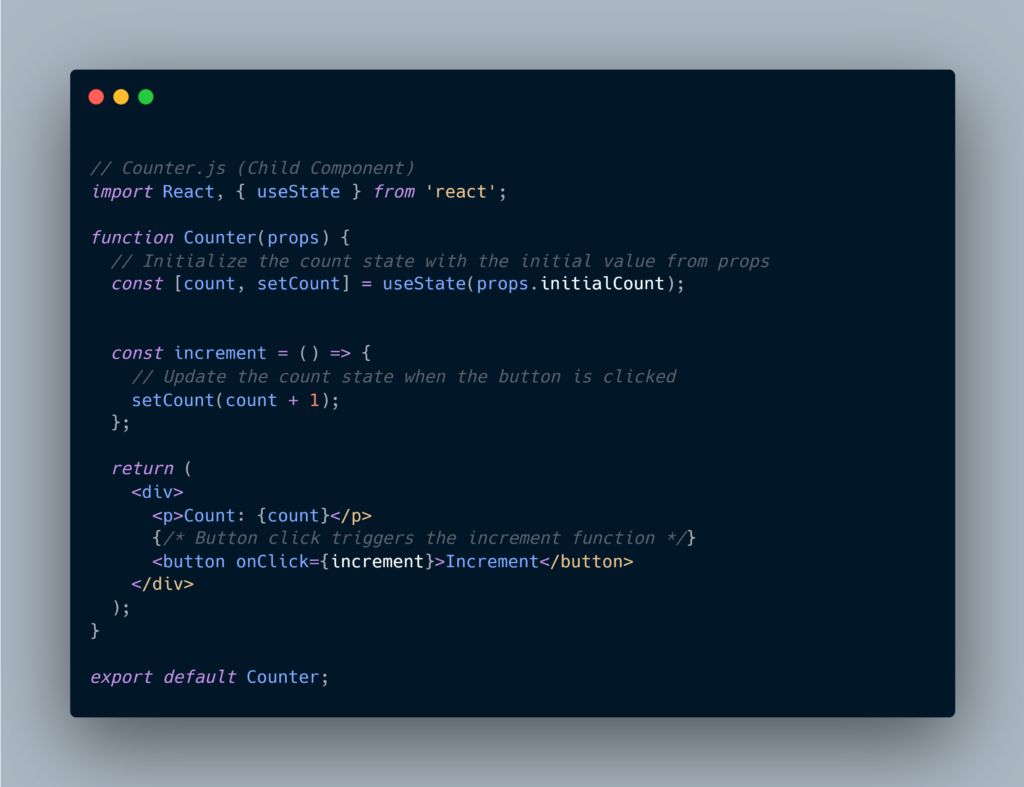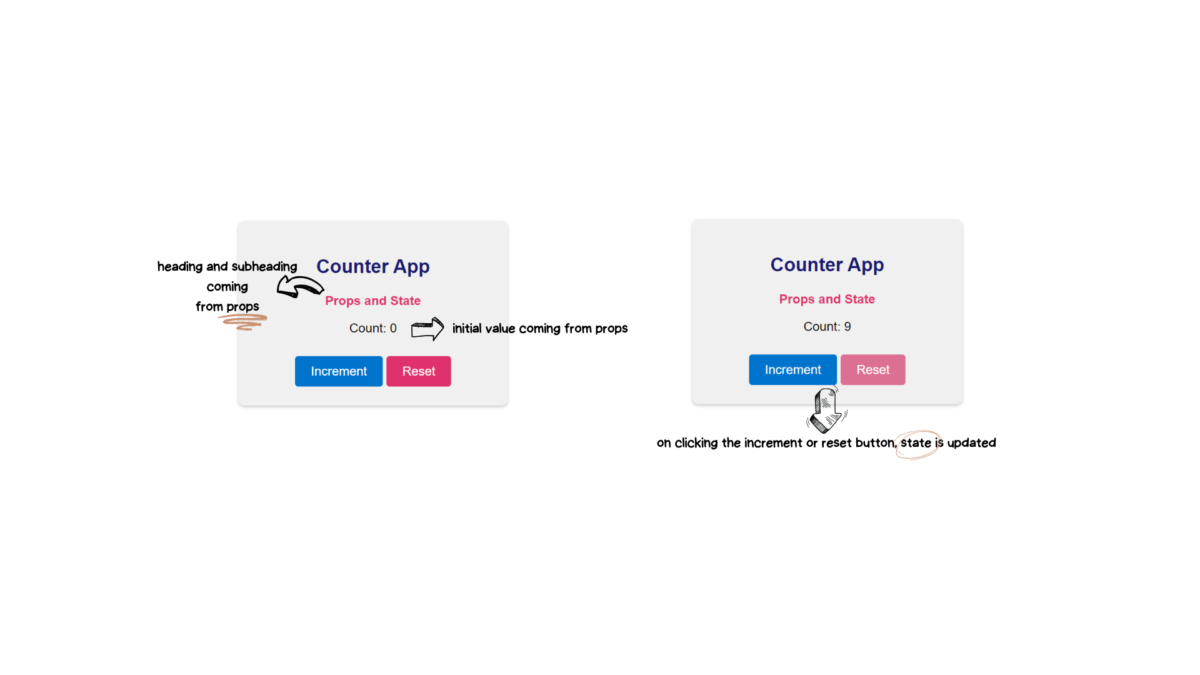React, a popular JavaScript library for building user interfaces, relies heavily on two essential concepts: Props and State. These concepts are fundamental to understanding how data flows within React components and how components interact with one another. In this guide, we’ll delve into what Props and States are, their differences, and how to use them effectively in your React applications.
Props: Passing Data Down the Component Tree

Props, short for properties, are a way to pass data from a parent component to a child component. They act as inputs for a component, allowing you to configure and customize the child component’s behaviour and appearance.
Parent-to-Child Data Flow
Props facilitate a one-way data flow, meaning data is passed from parent components to child components. This unidirectional flow ensures that child components remain predictable and easier to manage.
Immutable and Read-Only
Props are immutable, meaning child components cannot modify the props. They are read-only within the child component’s scope. Any changes must be made by the parent component that originally passed the props.
Customization
Props enable you to customize child components dynamically. You can pass different values to the same component, allowing it to render differently based on the props it receives.
Ideal for Static Data
Props are best suited for data that doesn’t change within the component itself and is controlled by its parent. Examples include text content, configuration settings, or initial data for rendering.
State: Managing Dynamic Data within Components
While Props are used for passing data from parent to child components, the State is employed for managing data that can change over time within a single component. State allows components to be dynamic and interactive.

Component-Scoped
State is internal to a component, meaning it is managed and controlled by that component itself. Each component can have its own state, independent of others.
Mutable
Unlike Props, a component can modify its own state using the setState function. When the state changes, React re-renders the component to reflect the new data.
Dynamic Data
State is ideal for data that changes during a component’s lifecycle. Examples include user input, form values, UI toggles, or data fetched from an API.
Localized
State is localized to the component where it is defined. It doesn’t affect or influence other components in the application unless explicitly passed as props.
Example of Prop and State


Conclusion
In React, understanding the distinction between Props and State is crucial for building effective and maintainable applications. Props facilitate the flow of data from parent to child components, while State allows components to manage dynamic data internally. By using these concepts correctly, you can create highly interactive and flexible user interfaces in React.
As you continue to explore React, remember that Props and State are just the tip of the iceberg. React offers a rich ecosystem of tools and patterns to build robust applications, making it a valuable choice for web development.

